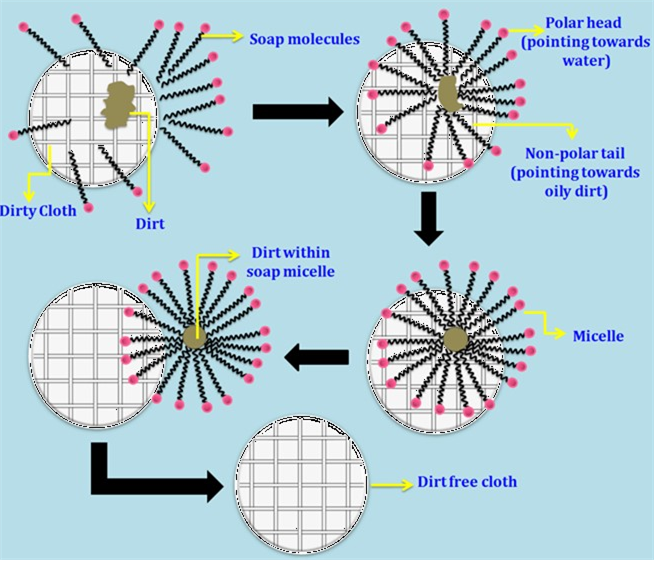Explain the mechanism of the cleaning action of soaps.
The soap molecule is generally represented as RCOONa. In solution, it ionizes to form RCOO
- and Na+. Each soap molecule has a polar head group (carboxylate ion, COO- group) and a long non-polar hydrocarbon tail (R group from long chain fatty acid). The polar head attracts the polar water molecule and is called hydrophilic end and the non-polar tail attracts the water insoluble oily or greasy dirt particles.
 When a dirty cloth is placed in soap solution, the long non-polar hydrocarbon tail of soap molecules points towards the oily dirt particles and the polar heads point towards the water. This forms a spherical structure with polar parts of the molecule on the surface and non-polar parts in the center. This spherical structure is called micelle. This micelle is attracted towards water and carries the oily dirt particles along with it. This causes the dirt particles to detach from the fibres of the cloth. In this manner, clothes become free from dirt or dust.
When a dirty cloth is placed in soap solution, the long non-polar hydrocarbon tail of soap molecules points towards the oily dirt particles and the polar heads point towards the water. This forms a spherical structure with polar parts of the molecule on the surface and non-polar parts in the center. This spherical structure is called micelle. This micelle is attracted towards water and carries the oily dirt particles along with it. This causes the dirt particles to detach from the fibres of the cloth. In this manner, clothes become free from dirt or dust.

433 Views


